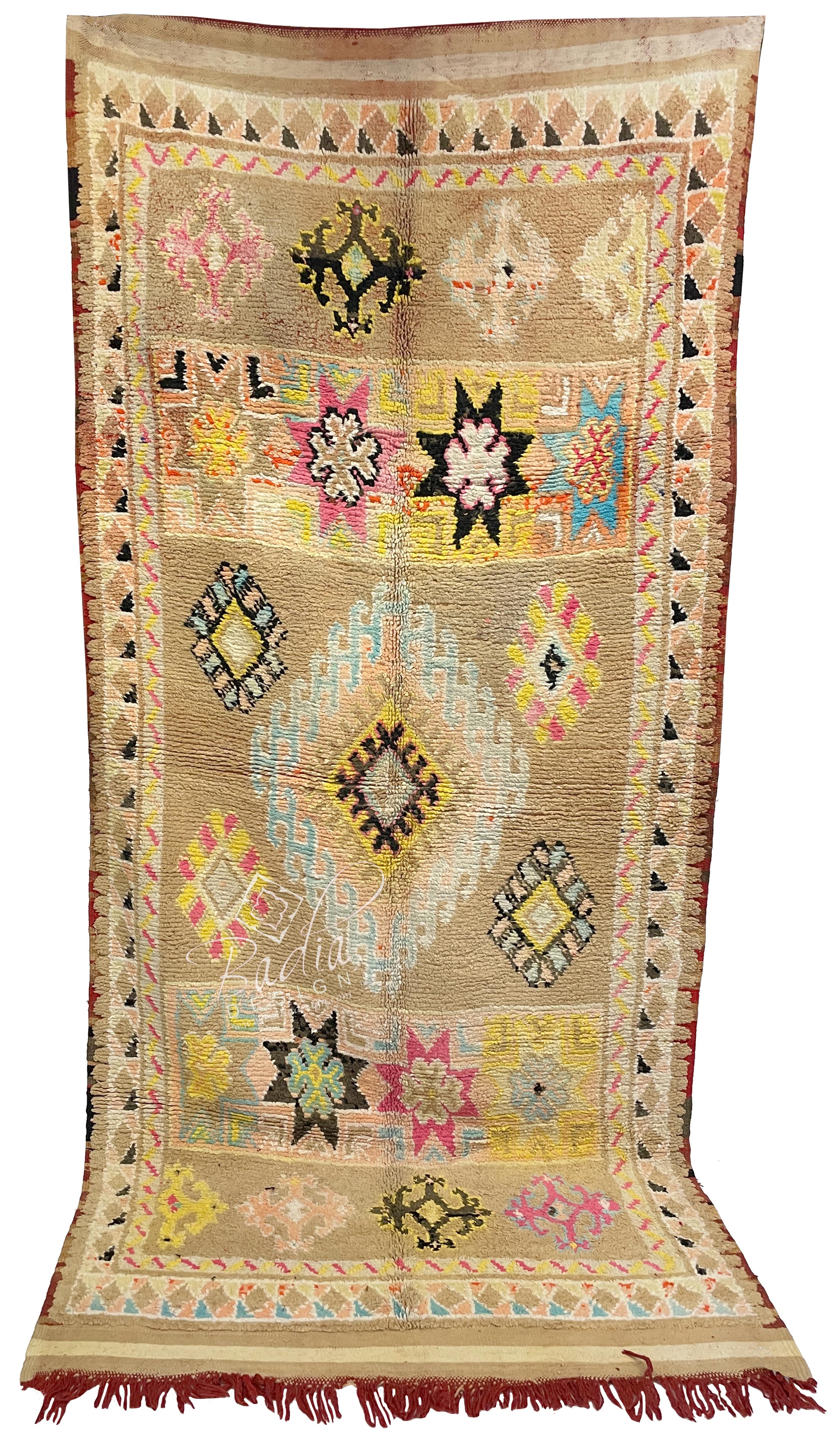Moroccan Berber Rugs: A Fusion of History, Artistry, and Timeless Elegance
These rugs have enchanted people across the globe with their historical significance, remarkable artistry, and timeless design. These rugs can elevate any space, from a snug living area to an elegant hotel suite. This guide delves into the rich origins of Moroccan Berber rugs, the detailed artistry involved in their production, their exceptional longevity, and practical tips for styling them in modern spaces.
The origins of Moroccan Berber rugs can be traced back millennia to the Berber tribes of North Africa. These indigenous groups, with their deeply rooted traditions, crafted unique weaving methods to meet the demands of their migratory way of life and varied environmental conditions.
The symbols and motifs in these rugs narrate stories that are unique to the tribe or family of origin. Motifs often symbolize concepts such as protection, nature, or fertility, giving each rug a profound heritage. Originally, these rugs were crafted for utilitarian purposes, such as providing warmth during harsh winters in the Atlas Mountains or acting as soft bedding in arid desert regions.
In the mid-20th century, Moroccan Berber rugs gained global popularity when prominent designers like Le Corbusier and Frank Lloyd Wright featured them in their iconic designs. Today, their timeless aesthetic and deep heritage make them a top pick for interior designers and collectors alike.
These rugs are created using time-honored techniques, preserved over many generations. This craftsmanship embodies a deep connection to heritage and artistry.
Berber rugs are typically crafted from natural materials such as sheep’s wool, camel hair, or even cotton. Wool stands out for being both durable and cozy, as well as for its natural warmth. Artisans often hand-spin the wool, giving each rug a distinctive texture.
Weaving these rugs is a time-intensive process, requiring weeks or months on handcrafted weaving tools. The knots—whether Beni Ourain’s loose and shaggy texture or the tighter weave of Azilal rugs—shape its beauty and resilience.
Natural dyes derived from plants, minerals, and insects are used to create the bold hues found in many Berber rugs. Earthy tones such as beige, cream, and brown are common in Beni Ourain rugs, while Azilal and Boucherouite rugs showcase bolder colors like reds, blues, and yellows.
The longevity of these rugs is one of their biggest strengths. As a result, they’re an excellent fit for homes and offices.
Berber rugs owe their longevity to the high-grade nature of their natural fibers. Wool’s elasticity and stain resistance contribute to their durability.
Cleaning and maintaining a Moroccan Berber rug is relatively simple. Routine vacuuming and periodic professional care can preserve their beauty for decades.
Tips for Styling Moroccan Berber Rugs in Modern Homes
Adding Moroccan Berber rugs to modern spaces is simpler than it seems. Their versatile designs and textures can complement a wide range of styles, from minimalist to bohemian.
1. Create a Focal Point in the Living Room
Use a large Beni Ourain rug as the centerpiece of your living room. Its neutral colors and simple geometric patterns can tie together various design elements while adding get more info a sense of warmth and comfort.
2. Add Color to Neutral Spaces
If your space leans toward a monochromatic or minimalist aesthetic, a vibrant Azilal or Boucherouite rug can introduce a pop of color and visual interest. These rugs work particularly well in neutral-toned rooms, where they serve as a focal point.
3. Combine Rugs for Depth and Style
To create a warm, layered look, place a smaller Berber rug atop a larger rug made from natural fibers like jute or sisal. This combination not only adds depth and texture but also highlights the intricate details of the Berber design.
4. Elevate the Look of Offices and Workspaces
Businesses can use Moroccan Berber rugs to create an inviting and sophisticated ambiance in office spaces, lounges, or reception areas. Their handmade quality conveys a sense of luxury and authenticity.
5. Use as Wall Art
Certain Moroccan Berber rugs are so beautiful that they function wonderfully as wall art. Hanging a rug on the wall can add a unique touch to your home or business, showcasing the craftsmanship and cultural heritage of the piece.
The Value of Moroccan Berber Rugs
Moroccan Berber rugs combine functionality, beauty, and cultural depth, making them a valuable choice for homes and businesses alike. These rugs are built to last, and their classic designs remain relevant despite evolving decor trends.
Eco-Friendly and Ethical Craftsmanship
Many Berber rugs are crafted using eco-friendly and sustainable practices. By investing in these rugs, you’re not only enhancing your space but also supporting traditional artisans and their communities.
Why Berber Rugs Gain Value Over Time
Authentic Moroccan Berber rugs often appreciate in value over time, especially vintage or rare pieces. These rugs serve as both decorative items and investment-worthy collectibles.
